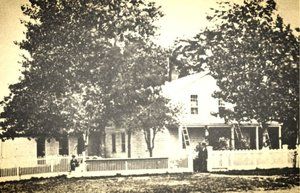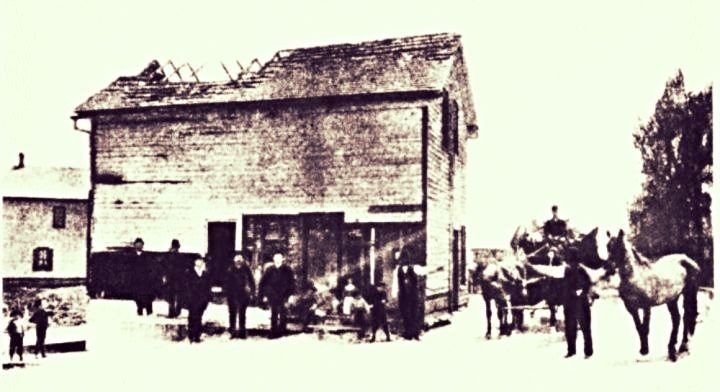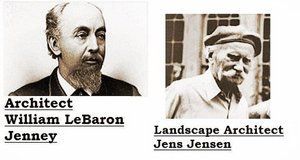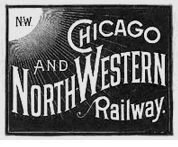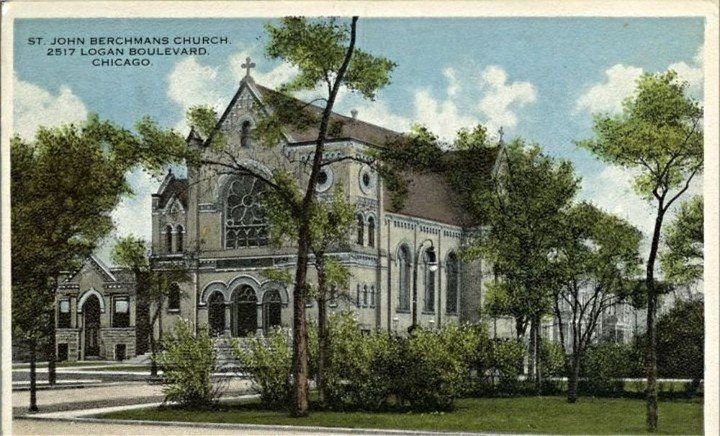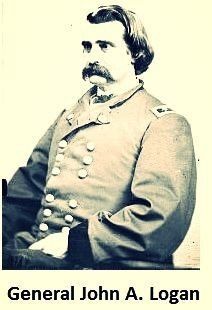The History of Logan Square
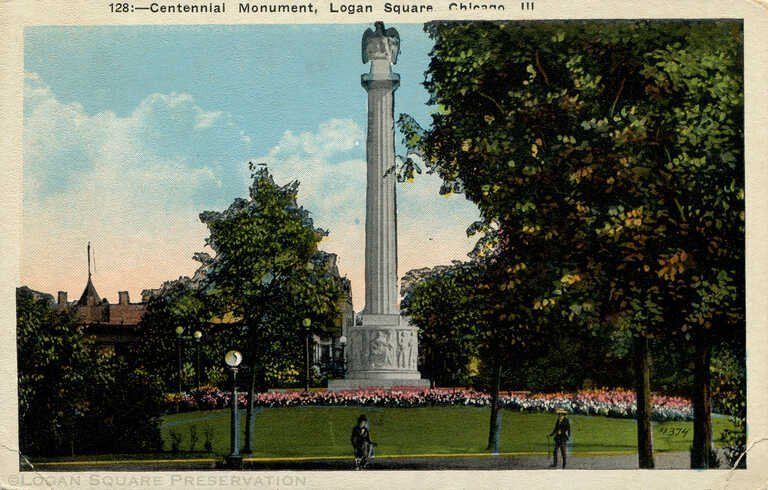
LOGAN SQUARE is anchored by the Logan Square Boulevards District, which was listed on the National Register of Historic Places in 1985 and became a Chicago Landmark on November 1, 2005. Encompassing 2.5 miles of the larger Chicago boulevard system, this district includes Logan and Kedzie Boulevards, and sections of Humboldt Boulevard, as well as Logan Squareproper (the Square) and Palmer Square.
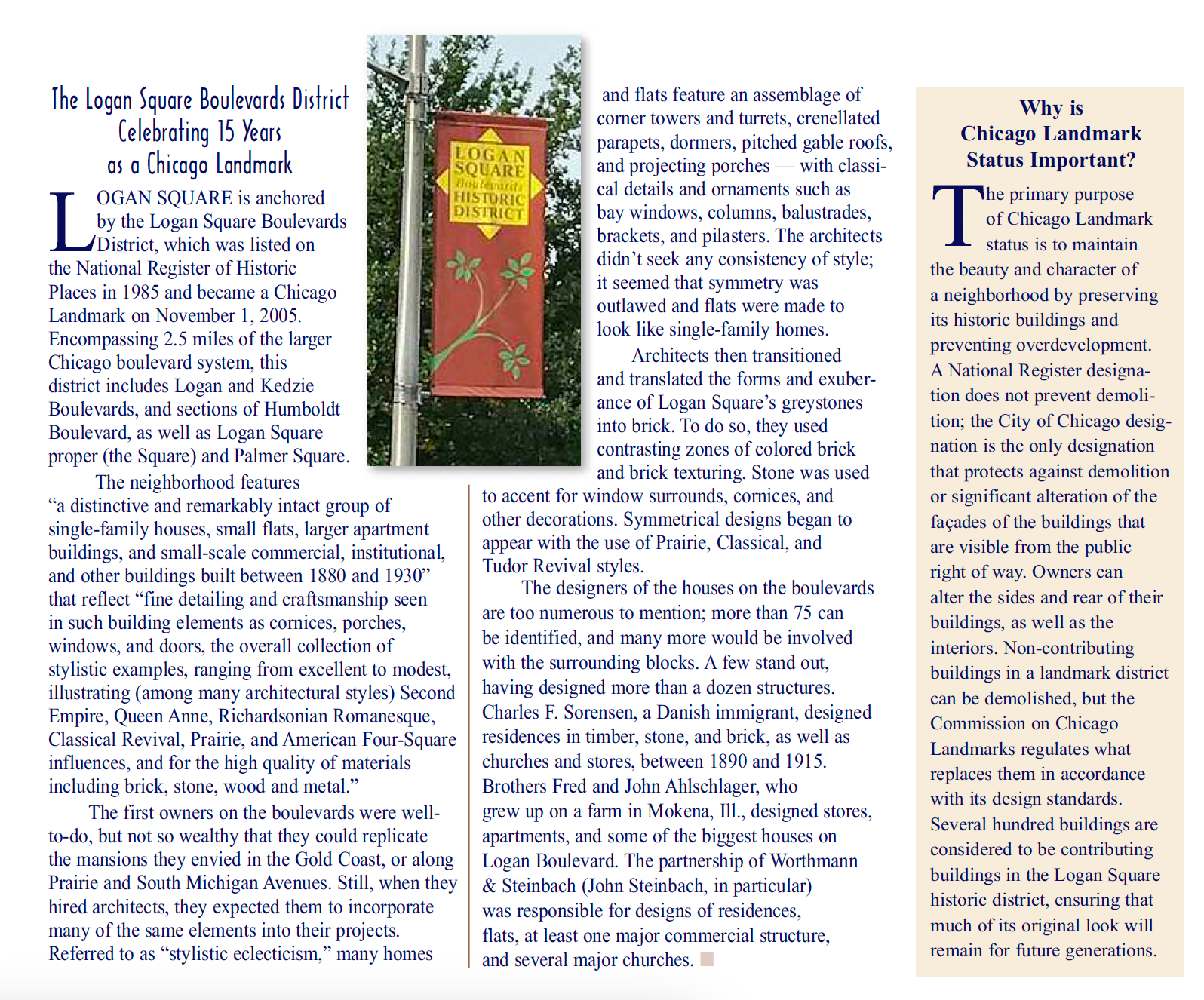
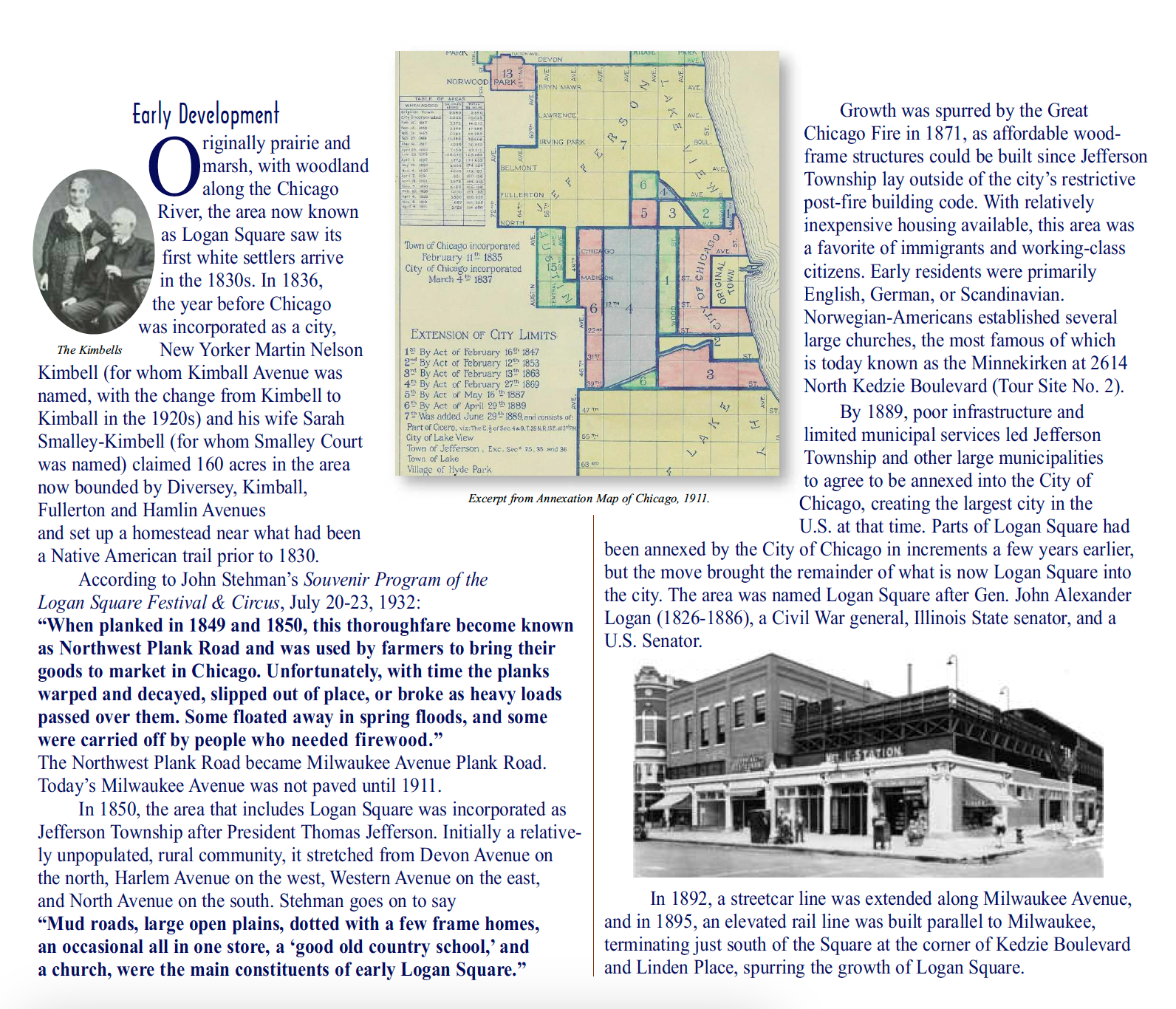
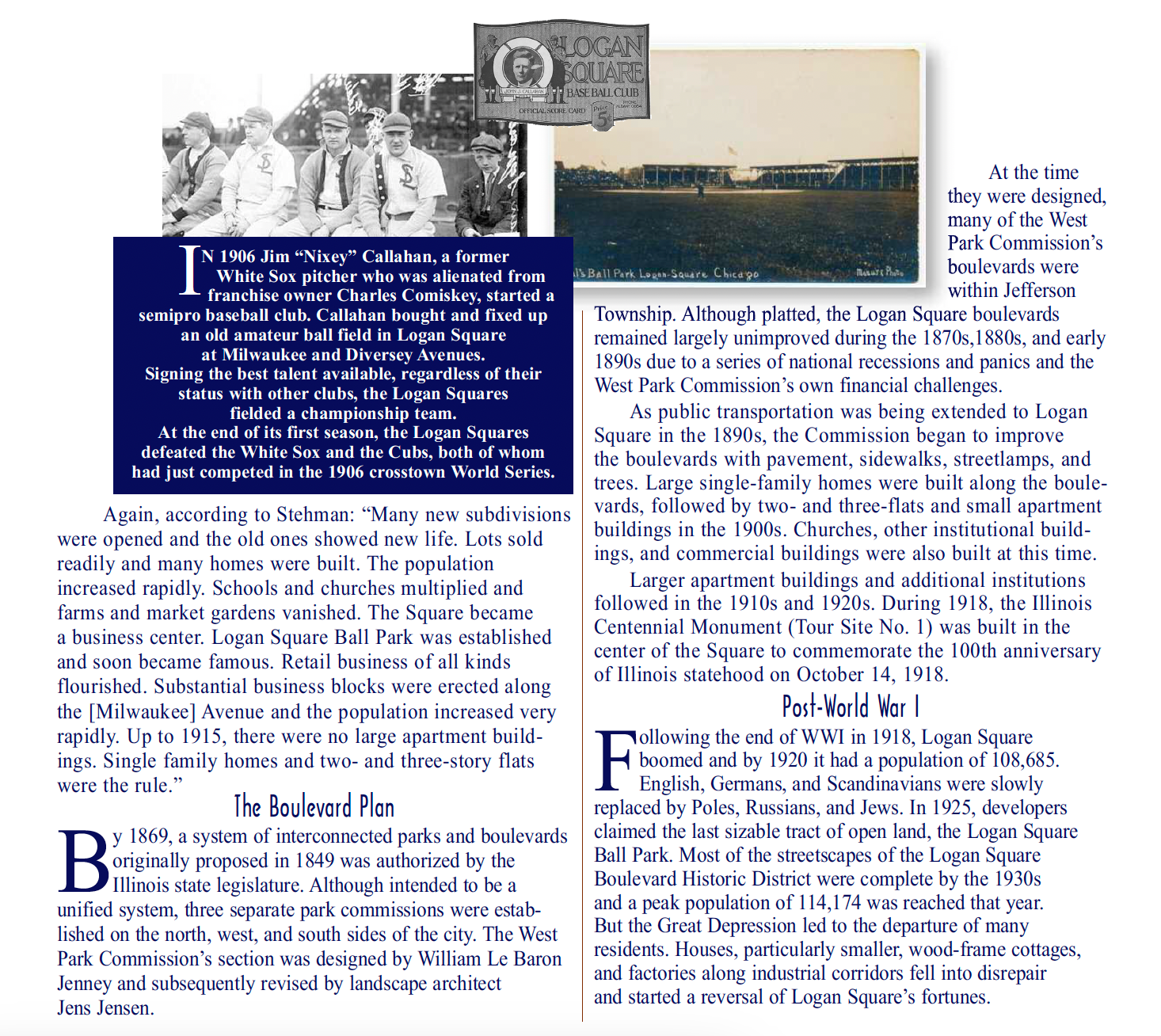
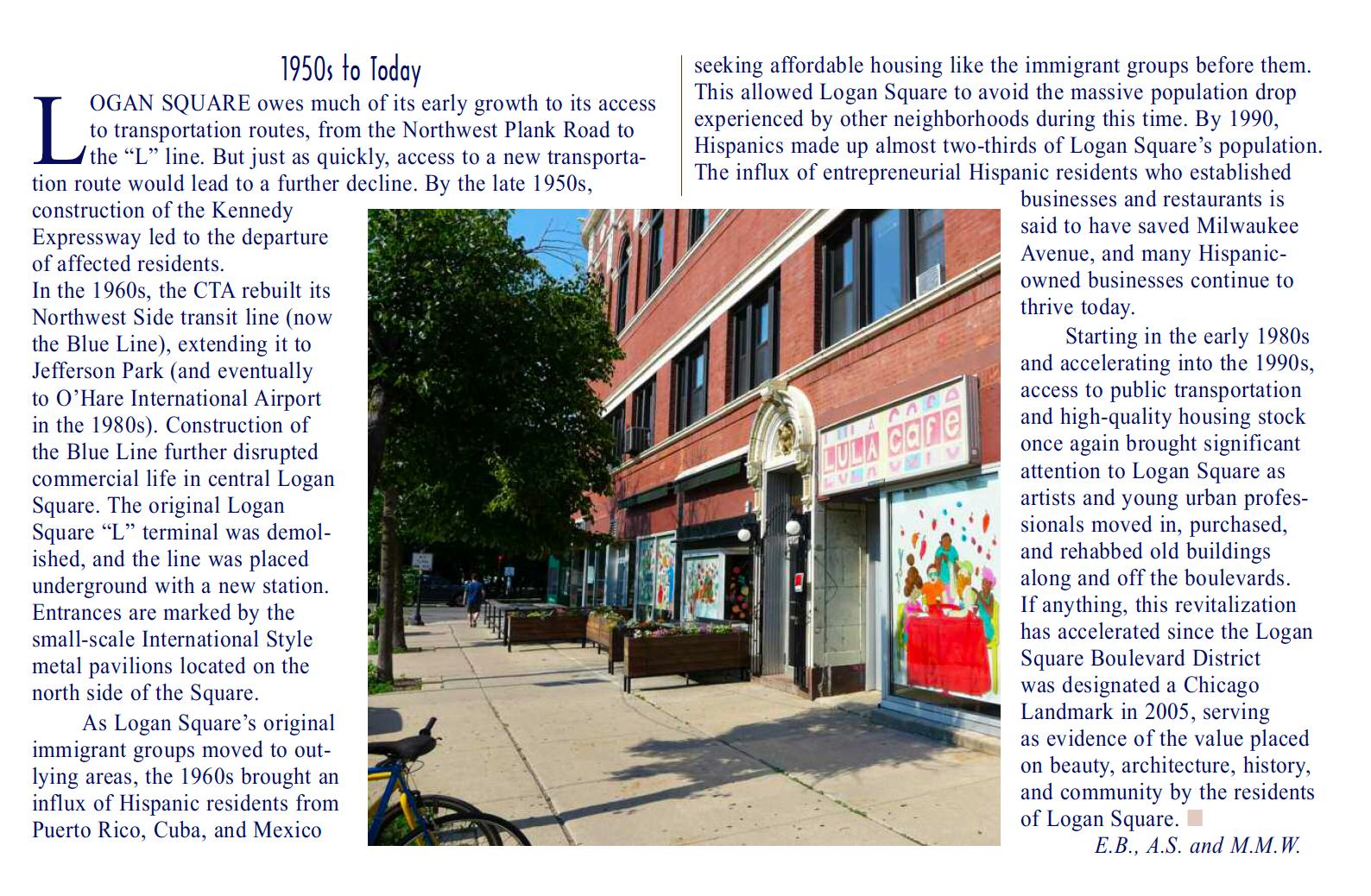
History through Images
Click through to learn more about each photo or image's history. Visit our Archives for an even deeper look into the history of our neighborhood!
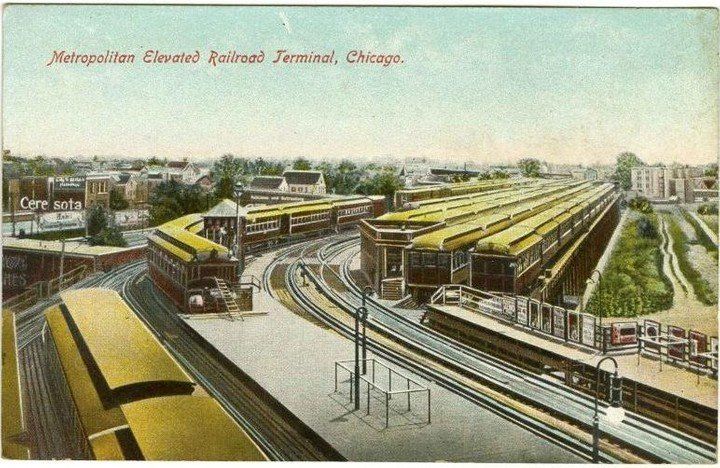
1895 The Metropolitan Elevated Railway
The Metropolitan Elevated begins running trains from the Loop to Logan Square, establishing the area as an important destination and transfer point.
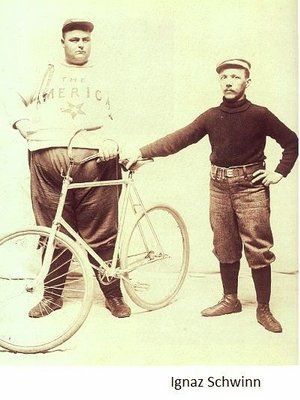
1901 Schwinn Bicycle Company
Arnold, Schwinn & Company construct a bicycle factory on Kostner Street west of the neighborhood. Founder Ignaz Schwinn builds a grand residence on the southeast corner of Palmer Square and nearby apartment building for the company’s employees. The residence was later demolished after being donated to St. Sylvester’s Parish. The parish constructed its present day school on the site.
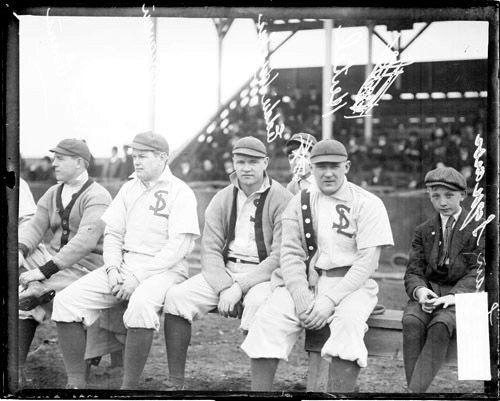
1905 The Logan Squares
Jim “Nixey” Callahan quits the Chicago White Sox and purchases an amateur playing field on the north side of Milwaukee Avenue from Sawyer to Diversey. It was the home of the semi-pro team the Logan Squares, who defeated both the Chicago Cubs and White Sox, both coming off the 1906 World Series. It was sold in 1924, the last large parcel in the area’s commercial district.
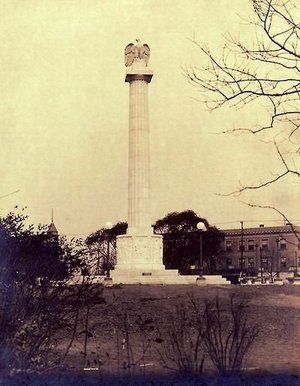
1915-1918 The Illinois Centennial Monument
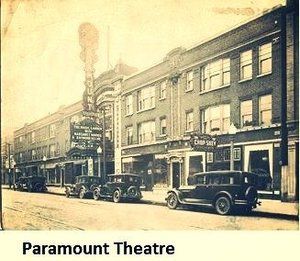
1930 Automotive Row & Theatre District
The Logan Square business district is fully built out including Automobile Row, one of the city’s great auto markets with every brand represented and a theater district which included the Congress, Rio, Paramount (now Logan), Harding and Rose theaters.
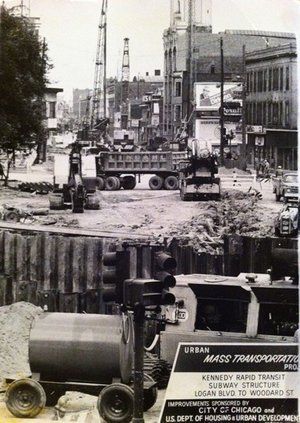
1950-1960 I-94 NW Highway
The boulevards are widened to accommodate increasing automobile traffic and land is eventually cleared to construct Interstate-94 Northwest Highway, which bisects Logan Boulevard. The highway is named Kennedy Expressway in 1963, following the death of President John F. Kennedy.
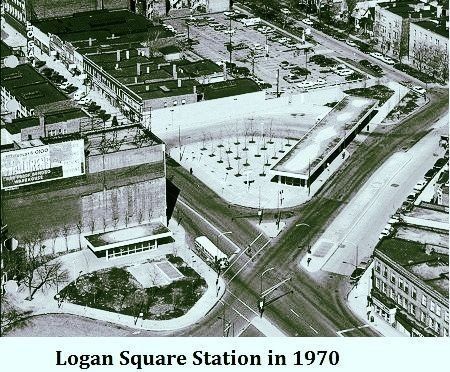
1965-1970 Blue Line Extension & Logan Square Station
The Chicago Transit Authority demolishes several historic buildings around Logan Square to allow for the construction of the Blue Line extension to Jefferson Park. The new stations were designed by Myron Goldsmith of Skidmore Owings & Merrill and set a new design standard that is adopted by transit systems across the country.
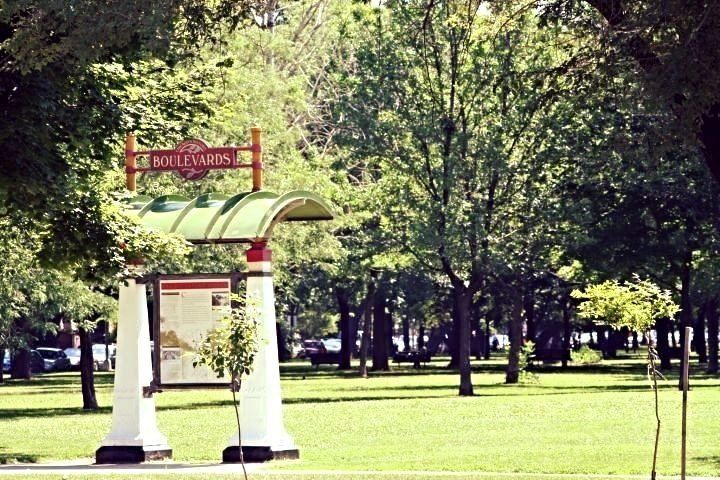
1985 Logan Square Preservation
Arnold, Schwinn & Company construct a bicycle factory on Kostner Street west of the neighborhood. Founder Ignaz Schwinn builds a grand residence on the southeast corner of Palmer Square and nearby apartmentNeighborhood organization Logan Square Preservation successfully added the Logan Square Boulevards Historic District to the National Register of Historic Places. In 2005 most of that district became an official city of Chicago Landmark District with overwhelming support from the community.
building for the company’s employees. The residence was later demolished after being donated to St. Sylvester’s Parish. The parish constructed its present day school on the site.
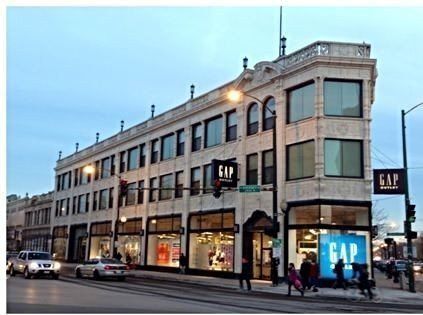
2005 Logan Square Business District
The Logan Square Business District is officially protected as the Milwaukee-Diversey-Kimball Chicago Landmark District. It spurred a re-investment and restoration of some of the most significant retail buildings in the area.
